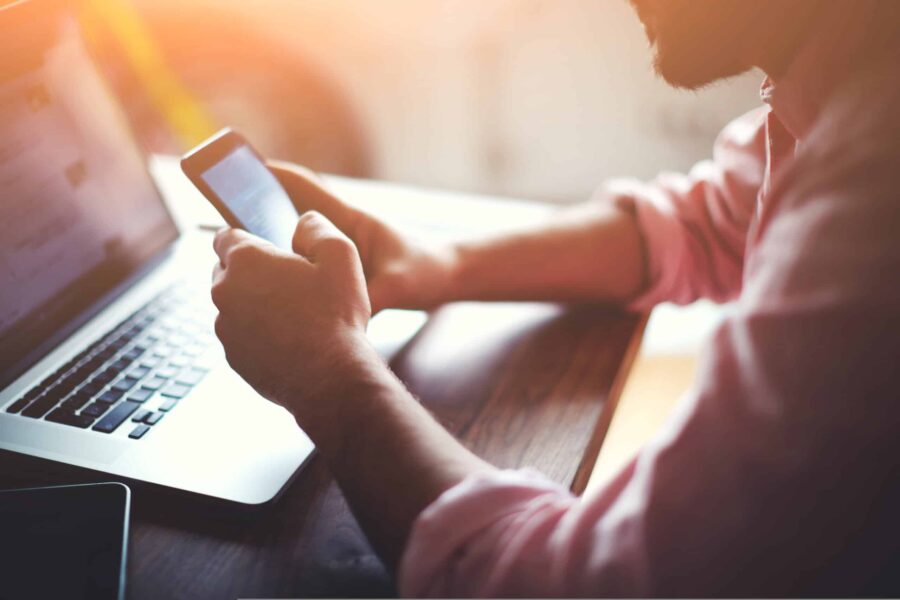Blog

Safeguard your social media accounts
When you think of protecting corporate data and devices, you know your IT department has everything protected, right? How about your marketing team’s social media accounts, used to build and support your brand? Is anyone thinking to safeguard your social media accounts? Unlike the Microsoft stack, servers, or network equipment, your internal IT team cannot control or protect your company’s social media account. The responsibility for securing and protecting your social media accounts will fall to your trusted sales and marketing employees.
While your sales and marketing employees may be brilliant at their jobs, they may not have the knowledge or experience to fully protect your social accounts. At Beringer Technology Group we have a practice focused on the many facets of cybersecurity and potential pitfalls your employees may face. Keep reading to learn some key methods for protecting your company’s social media accounts from unauthorized access and preventing bad actors from tarnishing your reputation.
Lock screens protect you and your data
Simply put, lock your phone, tablet, laptop or PC when you are done posting to your social accounts. Protect your social accounts and reputation from tampering, whether by a true “hacker” or a family member or friend trying to play a joke. It’s not funny when you have to explain to your manager why that closeup picture of your nephew’s face was posted to your company’s LinkedIn account over the weekend…without your knowledge. You really do need to safeguard your social media accounts.
Strong passwords are essential
A six-digit passcode may be enough to secure your phone, but you’ll need something more complex for your social media account passwords. Create a complex password for your social media accounts that you don’t use for any other account. Due to the continual occurrence of data breaches, hackers already have a long list of your favorite passwords from other websites and platforms. Using a different passwords on every site you use will lower your chance of having an account compromised and minimize the damage if that does happen.
Get your passwords out of your browser!
To keep your passwords out of your browser settings, our team recommends using a separate password management application such as 1Password, LastPass, Dashlane or Keypass. Using a password manager will put another layer of security between hackers and your passwords. Password manager can also offer complex, random passwords so you don’t have to create your own passwords or remember them all.
MFA is the best way
Our team also recommends enabling multifactor authentication (MFA) on your social accounts, which add a second identity-verification step after entering their username and password. The extra step that MFA requires, such as a one-time password or code on an authentication app, will add a second layer of protection for your accounts. So, even if your credentials are compromised, the MFA layer will stop the attacker, unless they also have access to your phone app.
Utilize social media security features
Facebook can help you monitor who’s accessing your account and from where. On a Mac or Windows computer, click on the down arrow located at the upper right corner of your Newsfeed and select Settings and Privacy. Then click Account > Password and Security to get more information.
Under the section Where You’re Logged In, you’ll see a list of the places and devices you’re logged into. If you don’t recognize a particular location or device, that means someone else has logged in as you and is likely doing things you do not approve of. You need to log them out forcibly (by clicking the ellipsis on the row indicating the malicious login and click Not you?) and then report the incident immediately.
Then, under Setting Up Extra Security, turn on Get alerts about unrecognized logins. Unfortunately, as of this writing, Twitter doesn’t have the same option. This makes implementing multifactor authentication even more necessary.
Mind your third party connections
Hackers can also take over your Facebook and Twitter accounts through third-party services to which you’ve given access to your profiles, so make sure to double-check what you have approved. Here’s what you need to do:
- Facebook: Go to Settings & Privacy > Permissions > Apps and Websites to view and manage third-party services that use Facebook to log you into the accounts you have with them. Remove any connections you do not recognize or no longer use.
- Twitter: Go to Settings and Privacy > Security and Account Access> Apps and Sessions to check and edit the list.
Lastly, check the permissions Facebook and Twitter have on your smartphone or tablet.
- Android: Go to Settings > Apps > App permissions.
- iOS: Go to Settings > Privacy to manage which service can access which parts of your phone (such as the camera and speaker).
The Last Word
By following these tips, you can significantly safeguard your social media accounts. Get in touch with our team if you have questions on how to secure your social media accounts or about any other cybersecurity topic.
Beringer Technology Group, a leading Microsoft Gold Certified Partner specializing in Microsoft Dynamics 365 and CRM for Distribution also provides expert Managed IT Services, Backup and Disaster Recovery, Cloud Based Computing, Email Security Implementation and Training, Unified Communication Solutions, and Cybersecurity Risk Assessment.




